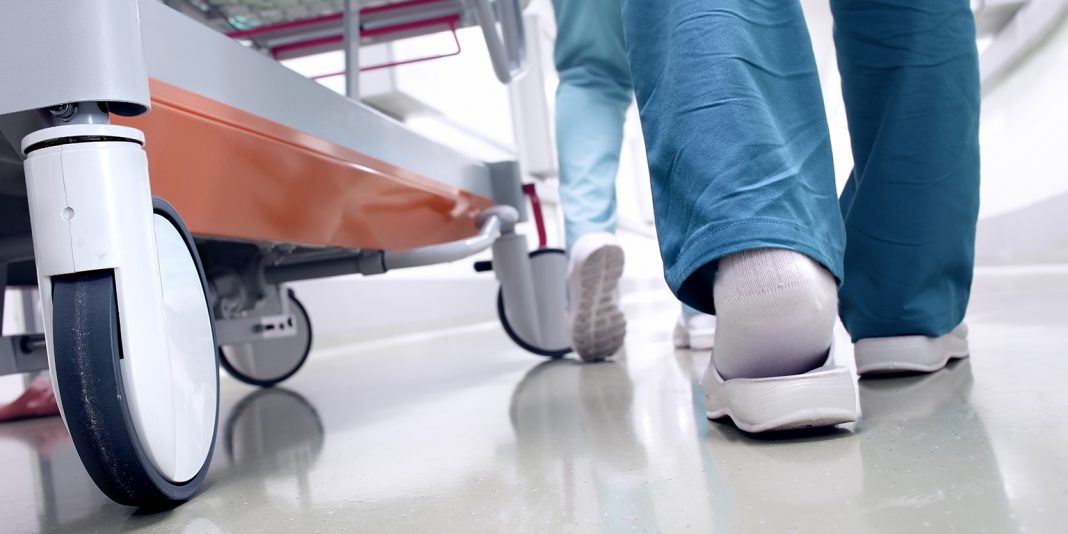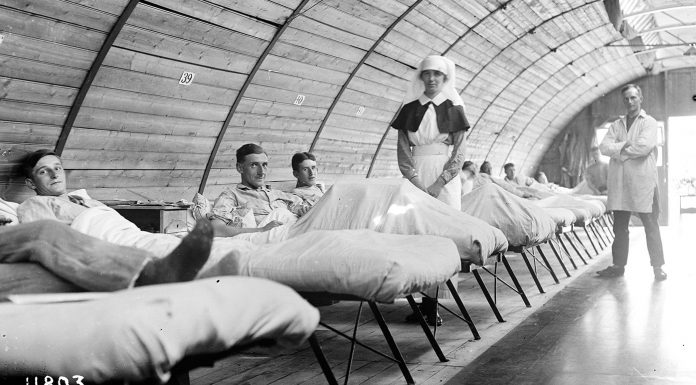Many would suggest that the perfect roster starts at 9am and finishes at 5pm. However, our hospitals and health care system must operate 24 hours a day, so that just isn’t realistic. Add to the conundrum the biological fact that humans are hardwired to sleep at night and the result, says sleep physiologist Dr Karyn O’Keeffe, is that there is no single, simple answer to shiftwork problems.

O’Keeffe, a researcher at Massey University’s Sleep/Wake Research Centre who spent five years as a shiftworker herself monitoring people’s sleep patterns, says this doesn’t mean that the negative aspects of shiftwork and the risk of fatigue can’t be managed better.
“Shiftwork is definitely a significant challenge, both for your body and for your mind, but there are sensible ways of managing it – for example, flexibility – that can make your life a lot easier.”

Greater flexibility in shiftwork is high on the agenda of the Sustainable Nurse Workforce Project Group led by South Canterbury District Health Board director of nursing Jane Brosnahan.
Brosnahan says the focus of the South Island project was initially on supporting its ageing nurses to stay in the workforce, but then broadened to look at strategies to sustain the entire nursing workforce.

“When we looked at shift patterns, we realised that what is good for older nurses is good for younger nurses as well. So we started to look across the whole of the system.”
Some of the science of sleep
A key to improving and building any shiftwork system is understanding more about the science of sleep and fatigue.
And the most influential component of this is our biological or body clock. O’Keeffe says the clock is a tiny group of cells that coordinates all the circadian (i.e. 24-hour) processes and cycles in our body using environmental cues, including natural light, as a guide (see side bar for more details).
Alertness is one of those cycles. Throughout the 24-hour day our alert and sleepy periods vary. We are at our most sleepy from midnight to 6am, with a peak of sleepiness between 3 and 5am and then a second but lesser dip in alertness in the afternoon between 3 and 5pm.
“So those particular times of the day are when we are most likely to be at risk for errors due to sleepiness or fatigue,” says O’Keeffe. We similarly have two peaks of alertness spread through the day – one mid-morning and another lesser peak mid-evening.
When it comes to shiftwork, the problem is we are trying to sleep and work at times that are not aligned with those natural patterns. This makes it a challenge when we are trying to function optimally at times when our body is naturally sleepy – and to get good quality sleep when our body is naturally programmed to be alert.
It is only since the advent of modern industrialised society that we have started to regularly fight our circadian clock by trying to convince our bodies that day is night and night is day.
Technical definitions differ, but O’Keeffe says in the simplest terms shiftwork is any work pattern that shifts your usual sleep pattern – even if that is only by an hour or two.
Knowledge of our biological clock has increased significantly in the past decade and
there is now no doubt that the body can’t fully adapt to shiftwork, she says.
Research indicates that even when we work permanent nights, our body clock shifts only slightly (by about three hours) and never reverses completely to turn us from a diurnal to nocturnal animal.
And it is not only daylight that signals the time of day to our body clock – it is also when we eat our meals, when we talk to other people and when we’re physically active. “So when we’re receiving this information that ‘it’s daytime, daytime, daytime’ our body finds it virtually impossible to shift to a different time zone,” says O’Keeffe.
Understanding our circadian rhythms
Our increased knowledge about our biological clock doesn’t mean we can influence it, but we can use the knowledge to improve a difficult situation.
“We use the things that are working for us,” says O’Keeffe. “And we try and manage the things that aren’t.”
We are most sleepy when our core body temperature minimum is at its lowest. Research shows that when we work consistent nights this temperature ‘low’ can shift from the usual time of around 5am to 8am. This means if you head straight home at the end of your night shift you can fall asleep relatively quickly. “So it’s a good idea to try and get into bed as soon as you can when you are working night shifts rather than stay up and go to bed later.”
Research has also shown that we have a built-in alarm clock that tells us to wake up about six hours after the body reaches its minimum core body temperature.
O’Keeffe says this works well when we are sleeping at night-time, as the alarm ‘wakes’ us around 10 or 11am, but when we try to sleep during the day it occurs at about 2pm in the afternoon. “That means sleep can be quite short and gets truncated to about six hours. Which is why quite often you will hear night shiftworkers say they wake up in the early afternoon period and can’t get back to sleep – it’s our natural drive to wake up at that time.”
Or course, one of the hardest things to balance is what is best for your sleep patterns – that is, coming home from night shift and getting to bed as quickly as you can – and the reality of returning home to children needing lunches made and a dog demanding a walk. The reality may be that be that you don’t get to bed until the children have gone to school, and you will need a catch-up nap later in the day to get your seven to eight hours’ sleep before starting the next night shift (see sleeping tips sidebar).
Assessing and managing fatigue risk
An employer has a responsibility to roster staff as safely as possible. But O’Keeffe says individual nurses also have a role in gauging whether their sleepiness or fatigue is likely to impact on their ability to do their job properly.
“As a shiftworker, it is really important that we take responsibility for managing our own level of impairment.”
O’Keeffe says there are three questions that shiftworkers can ask themselves to help judge the risk of being impaired by fatigue. The first is ‘how much sleep have I had in the last couple of days?’
“We know that when we haven’t had much sleep, the homeostatic process (the level of sleepiness) increases rapidly – particularly when we stay awake for more than16 hours at a time.”
Staying awake for 17 hours, for example – that is, going to bed one hour later than your normal bedtime – means people start to function similarly to someone at the legal alcohol limit, O’Keeffe says.
Anything over a 16-hour gap between bedtimes puts nurses at risk of making poor decisions and having reduced ability to make big-picture judgement calls and communicate effectively.
The second question to ask is ‘what time of day is it?’ Nurses working during the low circadian point of 3 to 5am are at the greatest risk of fatigue.
Thirdly, nurses should ask themselves ‘how well have I been sleeping recently?’ If they haven’t been sleeping well, they are more likely to be impaired.
If people do consider themselves at risk, that doesn’t mean they shouldn’t be working at all, says O’Keeffe. This should be applied only in cases of extreme fatigue. Rather, processes and strategies to manage standard fatigue should be in place, including improving communication processes with your colleagues when feeling fatigued and having someone working alongside you.
Ageing nurses and shiftwork
Dealing with fatigue and shiftwork becomes harder as nurses age.
Despite that, a major survey in 2012 of older nurses found that almost half of the 3,273 respondents were still working shifts.
This surprised Dr Jill Clendon, a researcher for the New Zealand Nurses Organisation (NZNO) and principal researcher for The Late Career Nurse project survey of NZNO members.
Clendon says older nurses did show a general tolerance of shifts as they were accustomed to them as part of their working lives. As one respondent reported:
”My family have left home but still my shifts dominate planning events long term to be together. The great side is I’ve never known any other social behaviour and have developed a life that allows me to involve myself in activities, to be flexible and plan long term – society is changing to meet the needs of shiftworkers, which I believe is very important.”
But others also reported needing greater recovery time as they aged – particularly rotating shift rosters that included nights – and increasing concerns about their poor sleep and health. As another respondent commented:
I have had many years of poor sleep patterns. Have developed hypertension and high cholesterol. Have no regular exercise and do not join exercise classes because of shiftwork.”
Clendon says the older nurses’ coping mechanism for increasing difficulties with rotating shiftwork was to move to casual or agency work so they could control the shifts they worked. This was usually because they weren’t offered other shift options such as ‘no nights’ or shorter shifts. “So these nurses were lost as permanent employees on the ward, resulting in loss of experience, institutional knowledge, etc…
“Is that (lack of roster flexibility) worth the risk of losing these skilled nurses? Just because someone is no longer able to cope with night shifts? Particularly when we’re moving into a nursing shortage.”
Clendon believes that shiftwork can be managed better and employers need to be flexible and open to different rostering options to stop nurses – both older and younger – pulling out of shiftwork because of fatigue or incompatibility with their home life.
Young nurses and the push for social rostering
It is not only older nurses who like the idea of great flexibility in rostering and shiftwork.
Those in the generation behind them have strong ideas about what work/life balance means. This was endorsed by a survey of 350 Generation Y nurses (i.e. born since 1995) carried out by Christchurch nurse researcher Dr Isabel Jamieson, that found that young nurses want flexible workplaces.
She also found that they start off wildly enthusiastic about their nursing careers but within a year the honeymoon is over – and part of that is a rapid disillusionment with shiftwork.
“They wanted rosters and a workload that didn’t mean they had to spend their days off sleeping to recover,” Jamieson told Nursing Review in a 2012 article.
She added that the young nurses had a “very fair and mature” attitude to allocating time in their days off to recover but felt that too little space was left to also enjoy friends and family or squeeze in study.
“If you want me to be the best nurse I can be, then I need a workload that doesn’t stress me to the max,” is a common attitude, says Jamieson.
The Sustainable Nurse Workforce Project Group is conscious of the need to support young nurses to keep nursing, says Jane Brosnahan. An initial approach has been to draw up a position statement (endorsed by the national directors of nursing group NENZ), that recognises the future state of nursing will require both “radical redesign” of some nursing processes and “subtle changes” to others, including “greater flexibility of work schedules and environments to meet the needs of nurses across the continuum”.
Part of this project is considering a marketing campaign to promote what can be a positive spin-off of shiftwork – more ‘me time’ during the day.
“Shiftwork does give you time to yourself when everybody else is at work (or school),” she says.
Each South Island DHB is also being encouraged to gather information about flexible childcare options available in their respective areas, outside of the traditional 9am to 5pm childcare centres that don’t work well for shiftworkers.
At the same time, the project is now at the initial stage of reviewing the research and best practices in order to establish a safe and healthy rostering process that balances staff desires, part-timers and full-timers and the needs of younger and older nurses, which will be shared across all South Island DHBs.
What are the risks of shiftwork to patient safety?
Another element of safe rostering is reducing the risk of errors and injuries due to nurse fatigue.
The New Zealand Blood Donor study, involving more than 15,000 workers, found that people working rotating shifts (excluding night shifts) were 75 per cent more likely to report a workplace injury than people working conventional daytime hours and nearly 90 per cent more likely if they worked rotating shifts, including night shifts. The risk of injury was also higher for those working permanent nights (38 per cent), though less than for those working rotation shifts)
International studies looking at nurses and shiftwork have found that nurses working rotating shifts are twice as likely to report a clinical error of some kind and three times more likely to have a car accident.
Clendon believes the research indicating fewer risks from fixed night shifts than rotating rosters means it could be time to bring the option of permanent night shift back to the table for more discussion and debate. She points out that older nurses on permanent night shifts appeared to find nights “less challenging” than those on rotating shifts. And some ‘owls’ or younger nurses may be more willing to work nights if they had the option of a fixed roster.
“I think a possible solution is to give nurses over 50 the option of not working night shifts – younger nurses may have to pick up the slack, but when they hit 50 they would also have the option,” she suggests. “Although it’s probably not a very popular option with young nurses, those with families may not have an issue and this is where fixed night shifts may work better.”
Brosnahan says the sustainability project was also aware of research raising questions over rotating versus fixed rosters. There was particular interest in one piece of research indicating that rotating shifts over longer periods of time might be a healthier option. Staff might spend a month on day shift, a month on evenings and a month on nights, giving their bodies more time to adjust to each timeframe.
The research also indicates that the risk of increased injuries and errors appear similar for nurses who work for more than eight hours at a time.
O’Keeffe says that while there are few good-quality, nurse-specific studies, general research indicates that the risk of errors tends to increase with the number of hours worked. As a result, controversy exists over whether 12-hour shifts are the safest option for health care environments.
Shift length, she says, is just one of many factors they consider when assessing whether or not a roster is safe. “So even if a nurse is working 12-hour shifts – and might not be getting as much sleep as someone working 10 hours – they might still be in a supportive work environment where fatigue is managed well.”
Clendon says that NZNO is in the process of completing a systematic review of 12-hour shifts and error rates among nurses working in acute care environments, and the initial results are very interesting.
What about the risks of shiftwork to nurses’ health?
Nobody is arguing that trying to work at night and sleep during the day is natural – or healthier than working conventional hours.
Increased understanding of how our body clock and circadian rhythms are involved in our daily metabolism has seen an upsurge of research interest in the impact of disrupting those rhythms through shiftwork.
The findings linked to working shifts can make grim reading.
“We do see that people who are shiftworkers have higher BMIs, higher reporting of gastrointestinal problems, and higher incidences of type 2 diabetes,” says O’Keeffe. Large cohort studies have also found increased incidences of heart disease, diabetes and cancer amongst shiftworkers, compared with other workers.
“So there are some fairly nasty health problems that can come with shiftwork,” she says.
This all sounds very discouraging for a long-term shiftworker or a nurse about to commence shiftwork.
O’Keeffe points out that the research studies can’t pinpoint the cause of the poorer health statistics as every shiftworker is an individual and there are many factors that come into play, including the type of shift, the length of time a person has worked shifts, their lifestyle and their sleep patterns. Most of the health risks are also shared by people who aren’t getting enough sleep, so a good start to reducing long-term risks is trying for seven to eight hours’ quality sleep every 24 hours.
Proposed nurse survey hopes to guide safe rostering
If the perfect roster is working permanent day shift, any other roster is always going to be a compromise of juggling giving nursing staff the shifts they request, meeting patient clinical needs, and reducing the risk of errors or injuries due to fatigued staff.
O’Keeffe says the Massey Sleep/Wake Research Centre has used extensive surveys with RMOs (resident medical officers aka junior doctors) to gather data on characteristic work patterns and build matrices for assessing whether a roster is at a low, medium or high risk for fatigue. “We want to do the same thing for nurses.”
The centre has an application in to the Health Research Council for funding to carry out an extensive and complex survey of nurses to ask them about the shifts they work and when; about their work, sleep and alertness patterns, whether they have reported clinical errors, and when they are most likely to occur.
“We’ve got our fingers tightly crossed and if we are successful we would aim to start the research later this year. We would use the survey data to build new fatigue management tools which would be relevant to nurses. The centre would also aim to develop a code of best practice for nurse rostering.
She says many people still hold on to a belief that somewhere out there is the perfect roster with a formula for the right set of shifts, of the right length, in the right order and with the right breaks in between. “That’s just not going to be the case.” The elusive perfect roster will still remain just that – elusive.
What’s natural about sleeping?
Two natural body mechanisms influence sleep:
Sleep/wake homeostasis lets our bodies know after we’ve been awake for a long time that the need for restorative sleep is accumulating and creates a drive that balances sleep and wakefulness. It is particularly strong after 16 hours of being awake.
Biological clock regulates our circadian (24 hour) rhythms, including the timing of periods of sleepiness and wakefulness throughout the day. This is a group of cells found in the hypothalamus, near the convergence of the optic nerves.
This clock responds to light and dark signals from the eye. Morning light signals that it is time to be awake, to produce hormones such as cortisol, and to delay the release of hormones such as melatonin. When the eyes signal to the clock that it is dark, melatonin (associated with sleep) is produced, so melatonin levels rise in the evening and stay elevated throughout the night, promoting sleep.
The clock also guides other circadian rhythms, including our core body temperature, the release of hormones and other important bodily functions.
Regular bedtimes and waking times help keep the homeostasis sleep drive and the biological clock working smoothly. Shiftwork puts the biological clock and subsequently our circadian rhythms out of kilter.
Shiftwork tips
Tips for staying awake during night shift
- Stay active.
- Keep a bright light on (to suppress melatonin).
- Schedule energetic activities earlier in the night, if possible (difficult for nursing).
- Consider having a 10–15 minute nap during your coffee break to keep you alert during the night.
- Use caffeine carefully – while it can be a good alertness booster, it takes five to eight hours to leave the body so can impact on your sleep post-shift.
- Get home safely – wind down the window and turn on the radio to stay alert. If you feel sleepy, stop as soon as possible and take a quick nap.
Facilitating sleep (post-shift)
- Reduce caffeine/alcohol intake and avoid before bedtime.
- Wear sunglasses when driving home in the morning after night shift.
- Try to get to bed as soon as possible after a night shift as your core body temperature will be near its lowest and you will be at your sleepiest.
- Keep your bedroom dark (curtains or blinds – preferably blackout – are crucial).
- Use an eye mask if daylight can still enter your room.
- Communicate well with your family/flatmates to try and keep noise levels down when you are trying to sleep.
- Keep your bedroom cool for sleeping, with suitably comfortable bedding.
- Avoid ‘blue’ electronic light in room during sleep (i.e. clocks, stereo lights, iPads) as that disturbs your body clock.
- Avoid using devices with bright screens in the two hours before bed (i.e. smartphones, laptops, computers and iPads).
- Keep your bedroom only for sleeping and sex (no work, no TV or electronic devices).
- Turn your phone off so you aren’t disturbed by texts, Facebook notifications, etc.
- Cigarettes can stop you getting to sleep and wake you during the night.
- While caffeine might not always stop you falling asleep, it reduces the amount of deep sleep you get so you can wake up feeling unrefreshed.
- Similarly, alcohol may see you fall asleep quickly but will impact on the quality of your sleep.
General tips for shiftworking
- Establish regular bedtime routine for whichever shift you are on.
- Eat regular, light, healthy meals. This might require planning to ensure your only food options at 3am in the morning aren’t carb-rich or junk food.
- Get regular exercise.
- You need seven to eight hours’ sleep over 24 hours (five hours is not enough).
- When at home, listen to your body and if you feel sleepy, sleep.
- Naps always boost your functioning, even if you don’t feel great straight afterwards. Try to keep them short and sweet (20–40 minutes) to avoid sleep inertia (the groggy feeling you can experience after waking from a nap.)
- If napping for longer than 40 minutes, consider having two periods of sleep over the 24 hours, with one being a nap of about two to three hours.























